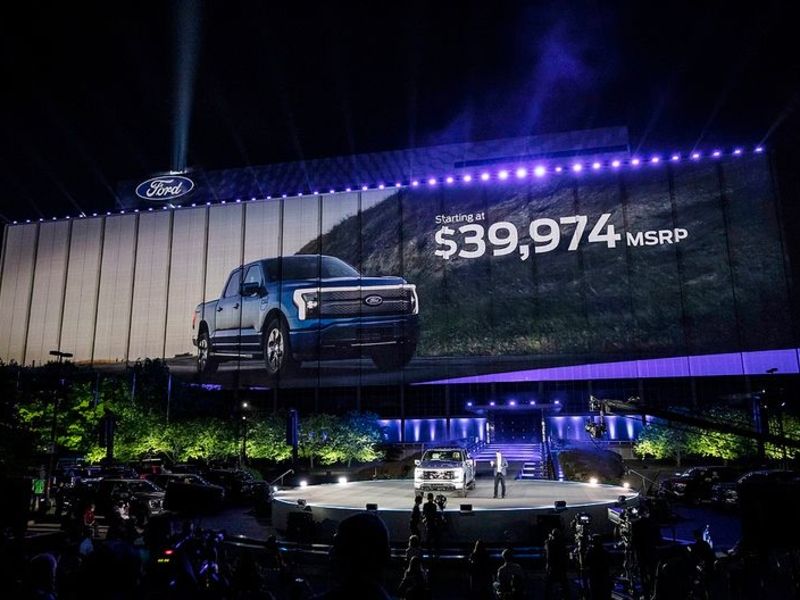
DETROIT — Ford Motor Co. said Wednesday it is upping its spending on electrification by $8 billion to $30 billion through 2025 and expects 40 percent of its global sales will be fully electric by 2030.
The additional spending will be focused on battery development, according to CFO John Lawler. The company said it plans to reduce battery costs by 40 percent, to under $100 per kilowatt hour, by mid-decade and will soon offer its own line of batteries branded as IonBoost.
Ford is also doubling down on its commercial business, expecting to nearly double the $27 billion it earned in 2019 from revenue tied to commercial hardware and adjacent services, estimating it will be $45 billion by 2025. It’s creating Ford Pro, a services and distribution business that will be geared toward commercial and government customers. Ted Cannis, Ford’s head of North America commercial vehicles, will become CEO of the new Ford Pro business unit.
The moves are part of a wide-ranging growth plan called Ford+ which CEO Jim Farley and other executives outlined to investors as part of the company’s Capital Markets Day.
“This is our biggest opportunity for growth and value creation since Henry Ford started to scale the Model T,” Farley said.
EV plans
Much of Ford’s growth hinges on electric vehicles. The company on Wednesday announced two new battery-electric vehicle platforms that will enable EV versions of vehicles like the Explorer, Lincoln Aviator and “rugged SUVs.”
Ford said it eventually expects profits from its EVs to be greater than what it makes from gas-powered vehicles.
Ford also said Wednesday that it has booked 70,000 reservations, in the form of $100 refundable deposits, for the F-150 Lightning electric pickup revealed last week. Farley had previously said it amassed 45,000 reservations in 48 hours.
The company, which last week signed a deal with SK Innovation to build EV batteries, said those batteries will be called IonBoost, a nod to its EcoBoost line of gasoline engines.
Ford said it will offer three types: IonBoost lithium ion batteries; IonBoost Pro lithium ion phosphate batteries for commercial vehicles; and solid-state batteries developed with Solid Power, a company in which Ford has an equity stake.
Farley said the company believes it can achieve solid-state battery production “within the decade.”
Ford said last week it would need two battery plants to achieve its production goals through its joint venture with SK.
‘Always on’
The automaker wants to transition away from a transaction-oriented business model to an “always on” relationship with customers.
That will involve what it calls Blue Oval Intelligence, the company’s next-generation, cloud-based platform for integrating electrical, power distribution, computing and software systems in connected Ford and Lincoln vehicles.
Ford recently began offering over-the-air updates, which it calls “Ford Power-Ups,” and expects to have 33 million Ford and Lincoln vehicles enabled for such updates on the road by 2028.
“I’m excited about what Ford+ means for our customers, who will get new and better experiences by pairing our iconic, world-class vehicles with connected technology that constantly gets better over time,” Farley said in a statement. “We will deliver lower costs, stronger loyalty and greater returns across all our customers.”
Ford said Wednesday it expects to deliver an overall 8 percent adjusted earnings before interest and taxes margin in 2023. The company on Wednesday said it also expects to achieve 10 percent margins in North America by 2023.
Lawler noted the company’s overseas operations, which have recently been a drag on its overall financial performance, have all improved their results, with many units on a path to sustained profitability.
“The tide has turned,” he said.
Shares in Ford rose 8.1 percent to $13.85 in afternoon trading.

